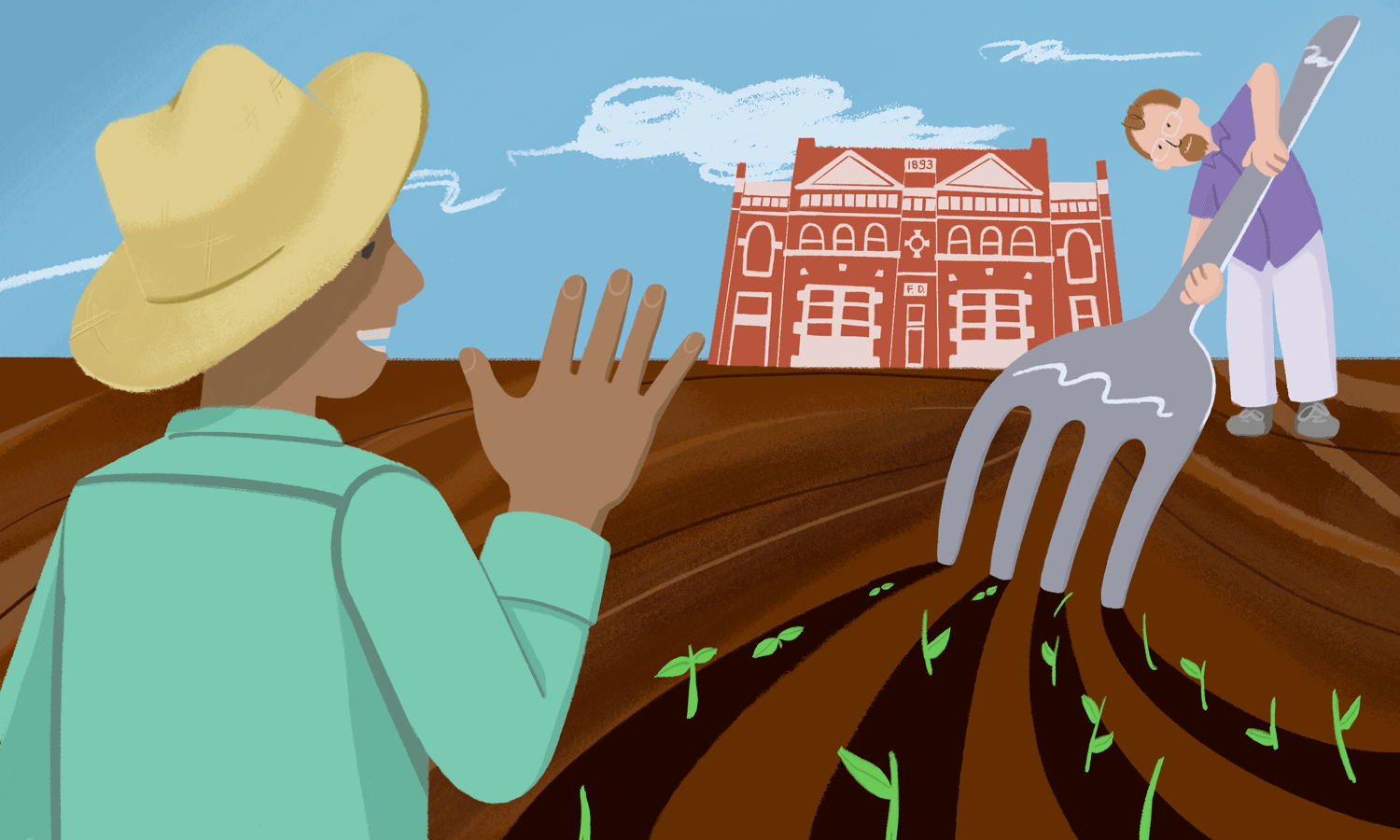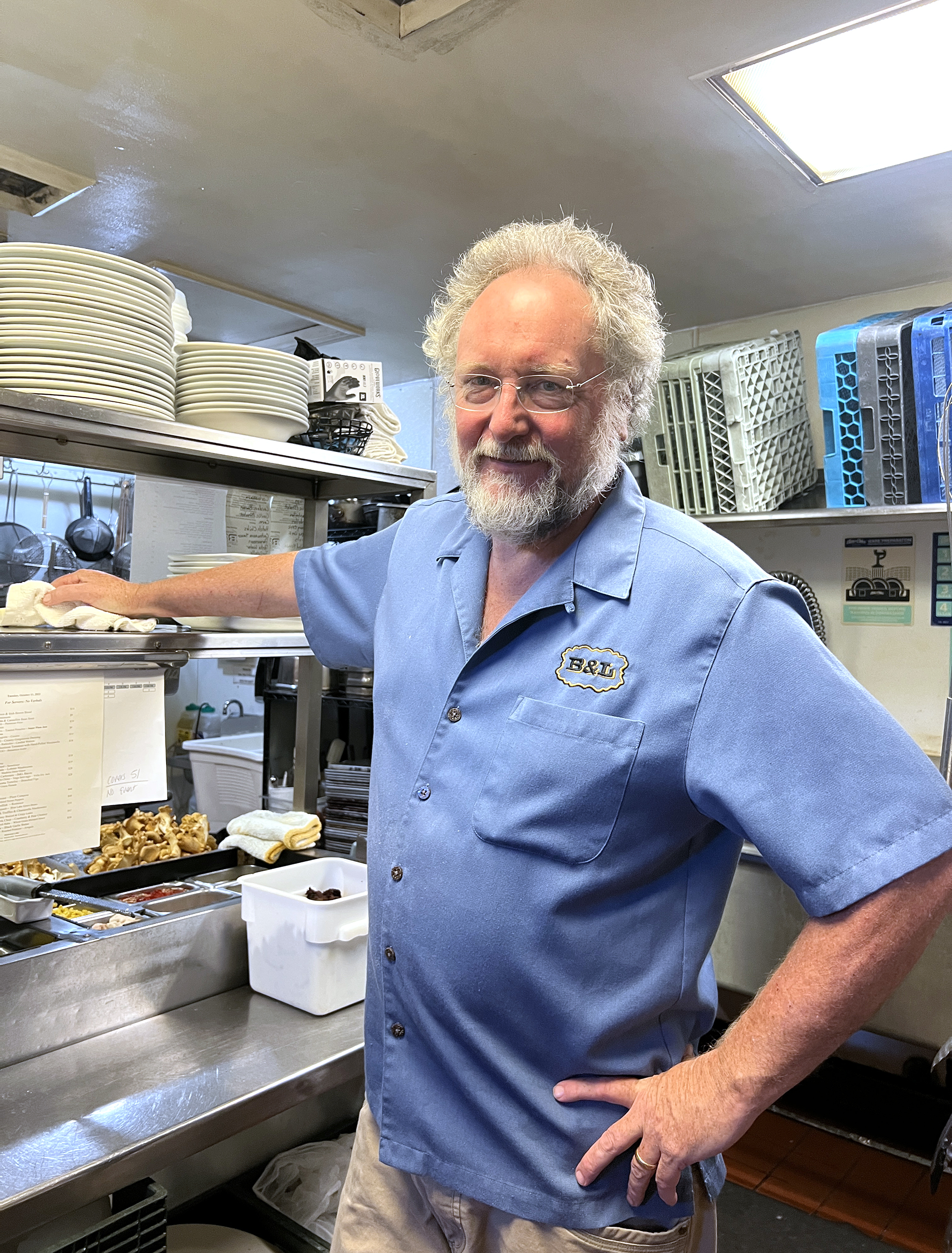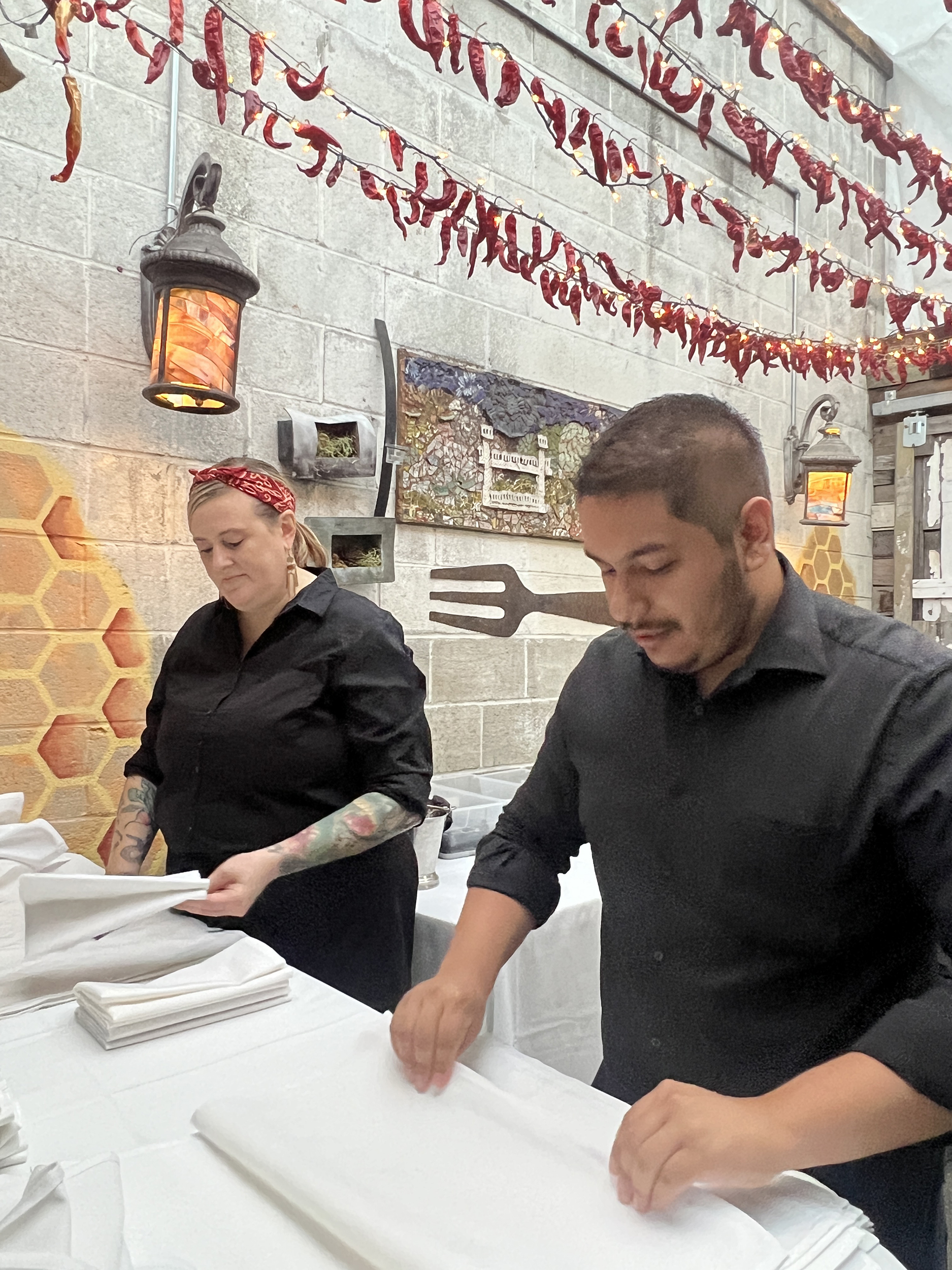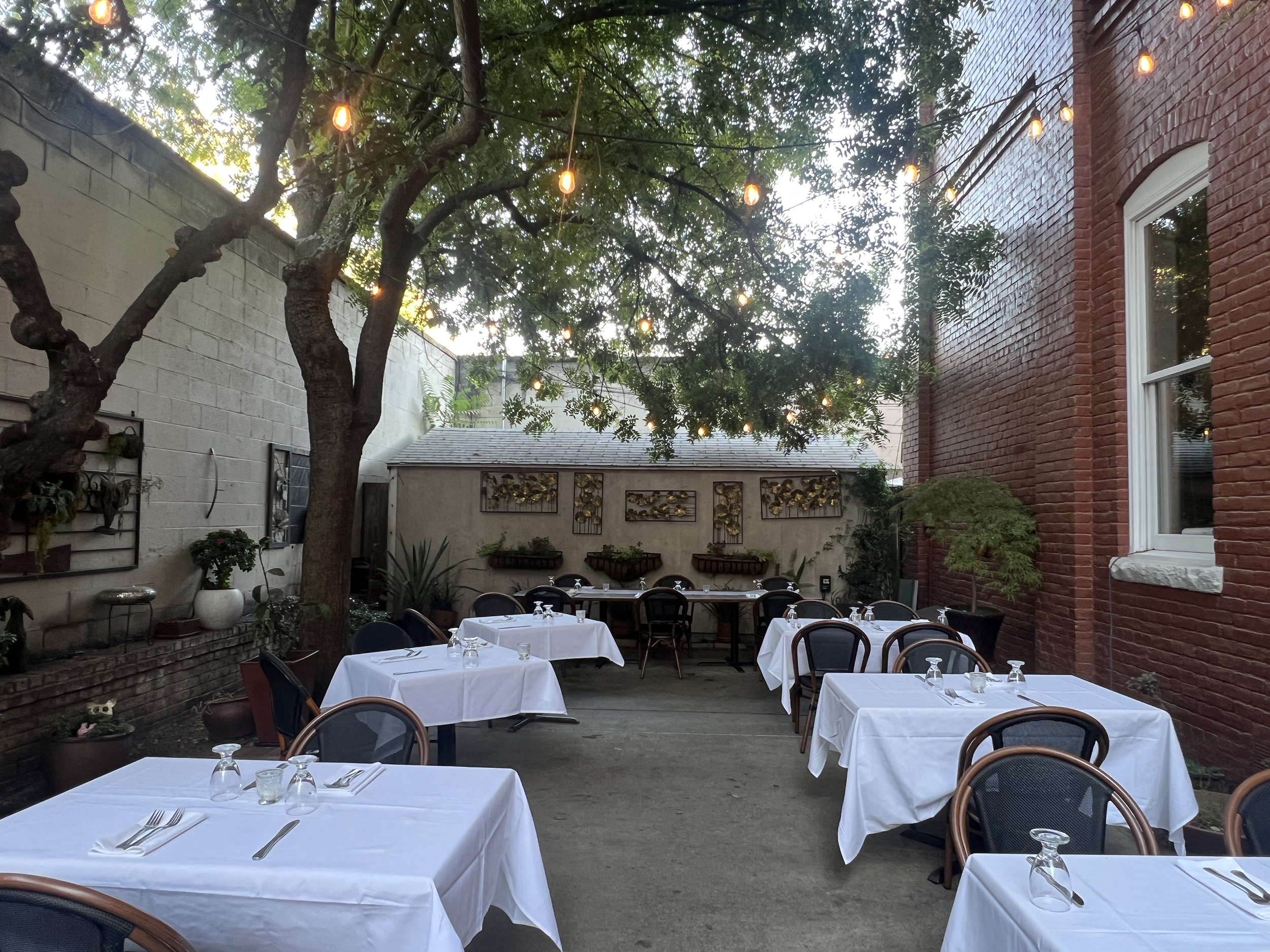
The
Impact
of
Climate Change
EEJOON CHOI / NEXTGENRADIO
Viviana Hinojos speaks with Patrick Mulvaney, the owner and head chef at Mulvaney’s B&L restaurant in Sacramento. Mulvaney sources all of his food locally, and changes the menu daily according to what is available, but what is available is changing.
Sacramento chef commits to sustainable practices in response to climate change
Sacramento chef Patrick Mulvaney voices concern as climate change impacts his food supply
Click here for audio transcript
I’m Viviana Hinojos with NPR’s Next Generation radio in Sacramento.
I’m here at Mulvaney’s B&L restaurant.
Owner and chef Patrick Mulvaney adapts to climate change with a rotating menu .
He sources his food from farmers who are committed to sustainable practices.
Despite these efforts he voices concern for future generations.
Patrick Mulvaney: What we’re looking for is what does California look like for our grandchildren? And it is a place is it a place they can live? And those questions, quite frankly, are all going to be directly impacted by the steps we take today to mitigate the negative effects tomorrow.
My name is Patrick Mulvaney, and along with my wife, Barb, we are owners and operators of Mulvaney’s Building and Loan, a new American restaurant in midtown Sacramento.
I graduated with a degree in English that qualified me to be a waiter in Manhattan and realized then in New York that I wanted to be restaurateur.
I think the climate change has affected the food that we get in many ways. Most obvious to us here is is not being able to grow things because of water.
We also see that as the weather changes, our availability of fish has changed as the temperature in the ocean changes. Our friends that grow coastal Pinot Noir count on the fog coming in everyday, and now you can no longer count on that fog.
Hank House is going to do beans and coleslaw and barbecue sauce and someone else is getting rolls. So we’ll be good.
The menu changes every day. we get to come in and look in the toolbox and see what we have to work with. apricots were only available for three weeks last year. Cherries got frozen. That’s a big deal if you’re a restauranteur and you’re looking forward to cherries on your duck and cherries in a clafoutis and cherries in your ice cream.
Climate change has impacted how the restaurant runs in many ways. The increase in fires. Not only the fires worse, but there is, uh, there’s no fire season.
Fire season is all year round. You can see a lot of our seating is outside. And when the air quality is bad, then people aren’t seating outside. We had a pretty big fire last year and it looked like it was snowing. The ash was so thick that it was coming down and people couldn’t breathe.
When we choose to source something, generally we go to the farm, we walk the fields, we shake the farmer’s hands and see what their ethos is, how they’re growing the food and how they’re treating their workers.
We are committed to helping the environment as much as we can, making sure that that the products that we use, the products that we serve and the and the methods by which they get to your table are as sustainable as possible.
We say when we get a pig, we use everything but the oink and we try to cut down on what goes into the landfill. And that could be using salmon skins to turn them into dog treats. We have always saved grease from fryers, and that’s gone into your lipstick and mascara. We’ve always recycled cardboard and glass and we’ve composted.
Climate change has kind of accelerated the conversation in the community at large.
We’re five blocks from the capital. And so there’s also a lot of politicians who are coming in and the people around the lobbyists and people trying to make change, which for us has been great.
People are looking to us to say, what are you doing now to make tomorrow better? And so that’s another layer of responsibility that we gladly we gladly take.
The biggest concern I have about climate change is that it’s just going to get worse.
And and as we see temperatures rising, as we see seas receding and icecaps melting and farmers not being able to farm. We wonder how we as hospitality can help that process happen and wonder if it’s enough and if it’s going to make it better.
############
Patrick Mulvaney, chef and owner of Mulvaney’s B&L, describes the moment he opens his midtown Sacramento restaurant as “showtime.”
“For me it’s my favorite time of the day. The doors open and you welcome everyone in and you’re delivering moments of delight and wonder to guests,” said Mulvaney.
How he delivers those moments is increasingly determined by the resources available in a rapidly warming world. Climate change impacts the way Mulvaney runs his restaurant, from where his customers sit to the toppings that garnish his signature dishes.
“The first question for me as a chef, having to put food out for clients, is [what’s] going to be available?” Mulvaney said. “Seasons have shrunk. Apricots were only available for three weeks last year. Cherries got frozen. That’s a big deal if you’re looking forward to cherries on your duck and cherries in a clafoutis and cherries in your ice cream.”
Mulvaney discovered he wanted to run his own restaurant after waiting tables in Manhattan in 1985. Nearly two decades later, he opened Mulvaney’s Building & Loan in an old firehouse five blocks from the state capitol. The Building & Loan portion of the restaurant’s name is inspired by a scene in the movie “It’s a Beautiful Life.”
Hotter ocean temperatures limit the variety and amount of fish Mulvaney can stock in his restaurant. His supply of pinot noir is threatened by changing weather patterns which no longer guarantee that fog will moisten coastal vineyards.
Mulvaney responds to these challenges with a constantly changing menu. He nurtures close relationships with the farmers who supply his pantry.
“Whatever the farmer brings that day is what we cook that night,” said Mulvaney.
“When we choose to source something, generally we go to the farm, we walk the fields, we shake the farmer’s hands and see what their ethos is, how they’re growing the food and how they’re treating their workers.”
Record-breaking California wildfires, which have destroyed entire towns and homes across the state, also impact inner city businesses like Mulvaney’s.
“A lot of our seating is outside. When the air quality is bad, then people aren’t sitting outside,” Mulvaney said. “We had a pretty big fire last year and it looked like it was snowing … the ash was so thick that it was coming down and you couldn’t breathe.”
In response to climate change, Mulvaney has committed to what he calls a “green promise” at his restaurant.
In order to keep this promise, Mulvaney has implemented several commitments.
“We are committed to helping the environment as much as we can, making sure that the products that we use, the products that we serve, and the methods by which they get to your table are as sustainable as possible,” Mulvaney said.

Patrick Mulvaney, chef and restaurateur, stands in his kitchen at Mulvaney’s B&L on Oct. 10, 2022, in midtown Sacramento which he opened 25 years ago with his wife Bobbin.
VIVIANA HINOJOS / NEXTGENRADIO

Cooks lay out dinner ingredients on the grill on a Tuesday night in October at Mulvaney’s. All meat is locally sourced, but fish have been harder to get because rising temperatures have heated up the water that is their natural habitat, decreasing their population.
VIVIANA HINOJOS / NEXTGENRADIO
Throughout Mulvaney’s B&L you will find LED lights that use less energy, flaps in walk-in refrigerators that prevent the loss of cold air, and recycled cardboard and glass.
Minimal waste is also another part of the green promise, which includes turning salmon skin into dog treats.
“We say when we get a pig, we use everything but the oink and we try to cut down on what goes into the landfill,” said Mulvaney.
Mulvaney hopes these commitments will result in positive change.
Some of that change, he said, has started with conversations in his restaurant, where politicians and lobbyists come to break bread.
Mulvaney’s favorite guests are the people who live in the neighborhood that come to enjoy a quick meal and a drink in the middle of the week.
His other favorite group of people are his employees which Mulvaney considers family.
“I remember when I was 20 and cooking and didn’t have any money and people were gracious to me because they knew just like I do now that we have to encourage those who are coming behind us,” he said.
Mulvaney’s biggest concern is for the future generations. He worries about what will happen if climate change continues to accelerate.
“What does California look like for our grandchildren? And is it a place they can live?” said Mulvaney. “And those questions, quite frankly, are all going to be directly impacted by the steps we take today to mitigate the negative effects tomorrow.”

Servers Sarah Jean Fuller (left), and Gustavo Hinojosa prepare table linens before the dinner rush at Mulvaney’s B&L on Oct. 11, 2022. Red chiles hang overhead drying to be used in the restaurant’s cuisine.
VIVIANA HINOJOS / NEXTGENRADIO

Ash from California wildfires sometimes spoils outdoor seating at Mulvaney’s B&L restaurant. The weather was clear on a Tuesday afternoon in early October before the dinner rush.
VIVIANA HINOJOS / NEXTGENRADIO
Chef Patrick Mulvaney, owner of Mulvaney’s B&L restaurant, prepares dough for Sonoran-style tortilla. Mulvaney’s favorite time of day is when the restaurant opens and he can welcome diners.

Artist Maren Conrad painted a mural of Lilly, the Mulvaneys’ beloved dog on the wall outside of the couple’s restaurant on 19th Street shortly after the dog passed away. She left the lilies as outlines, and on Patrick Mulvaney’s birthday, friends and family filled the flowers with color.
VIVIANA HINOJOS / NEXTGENRADIO